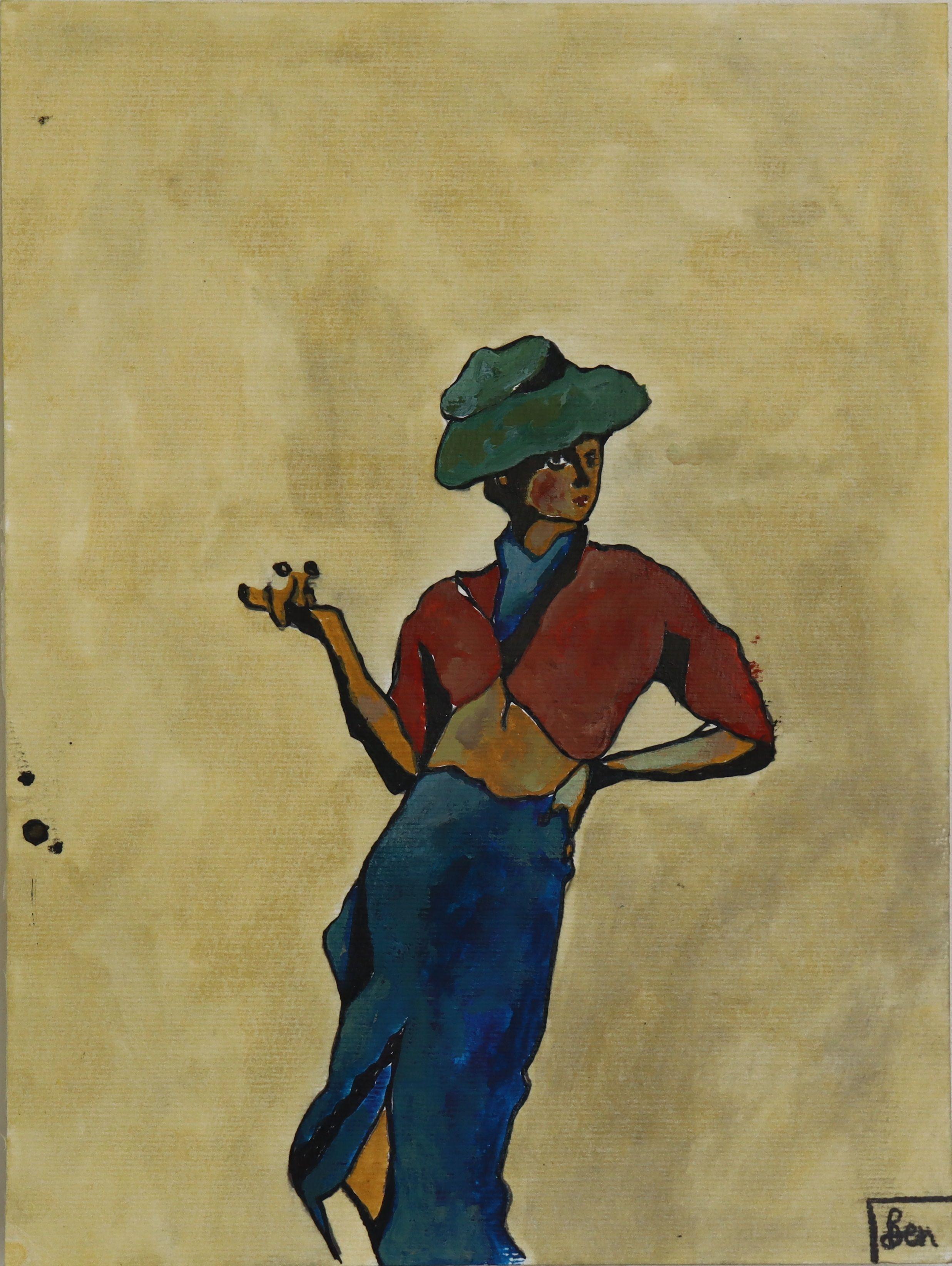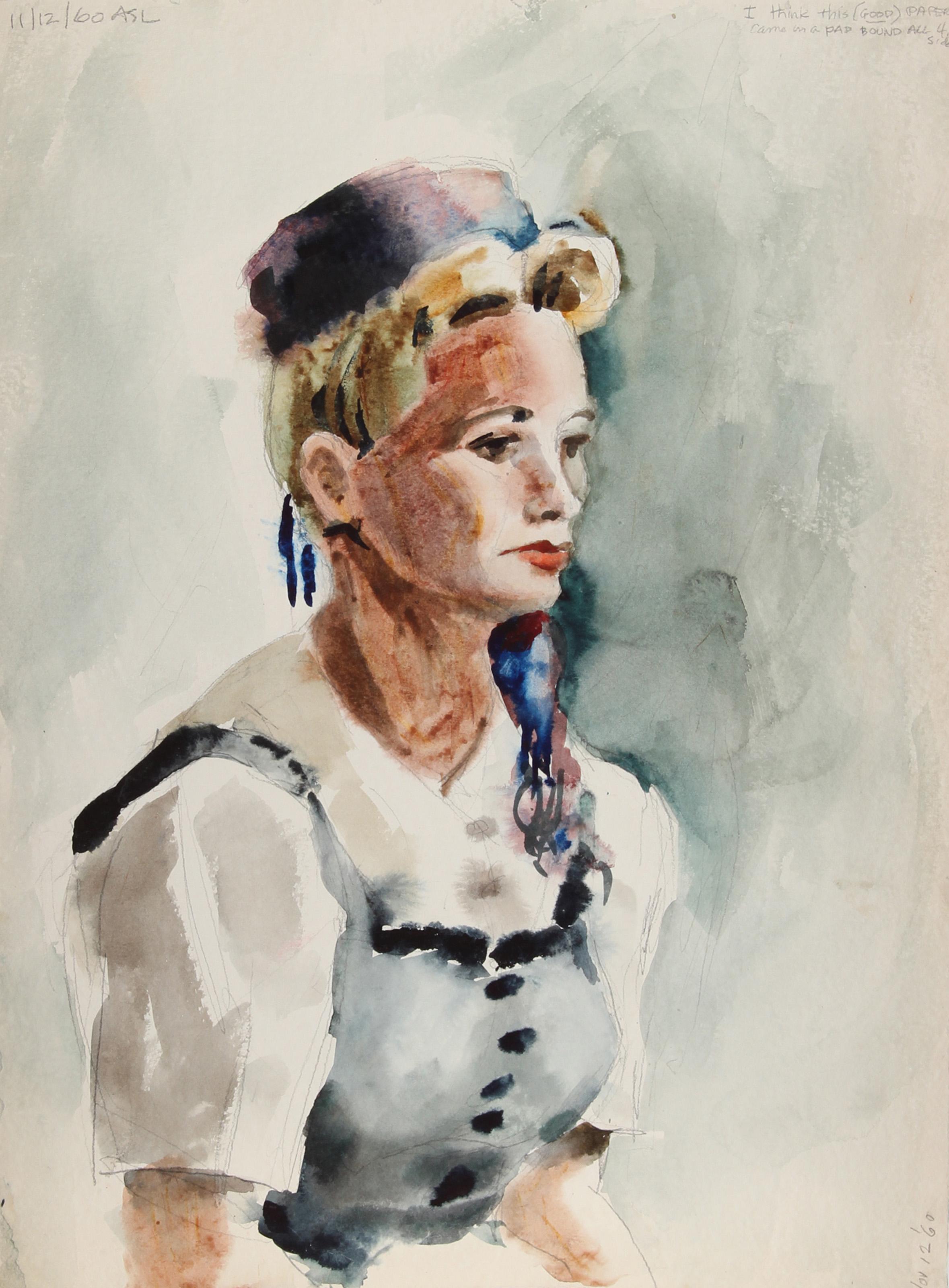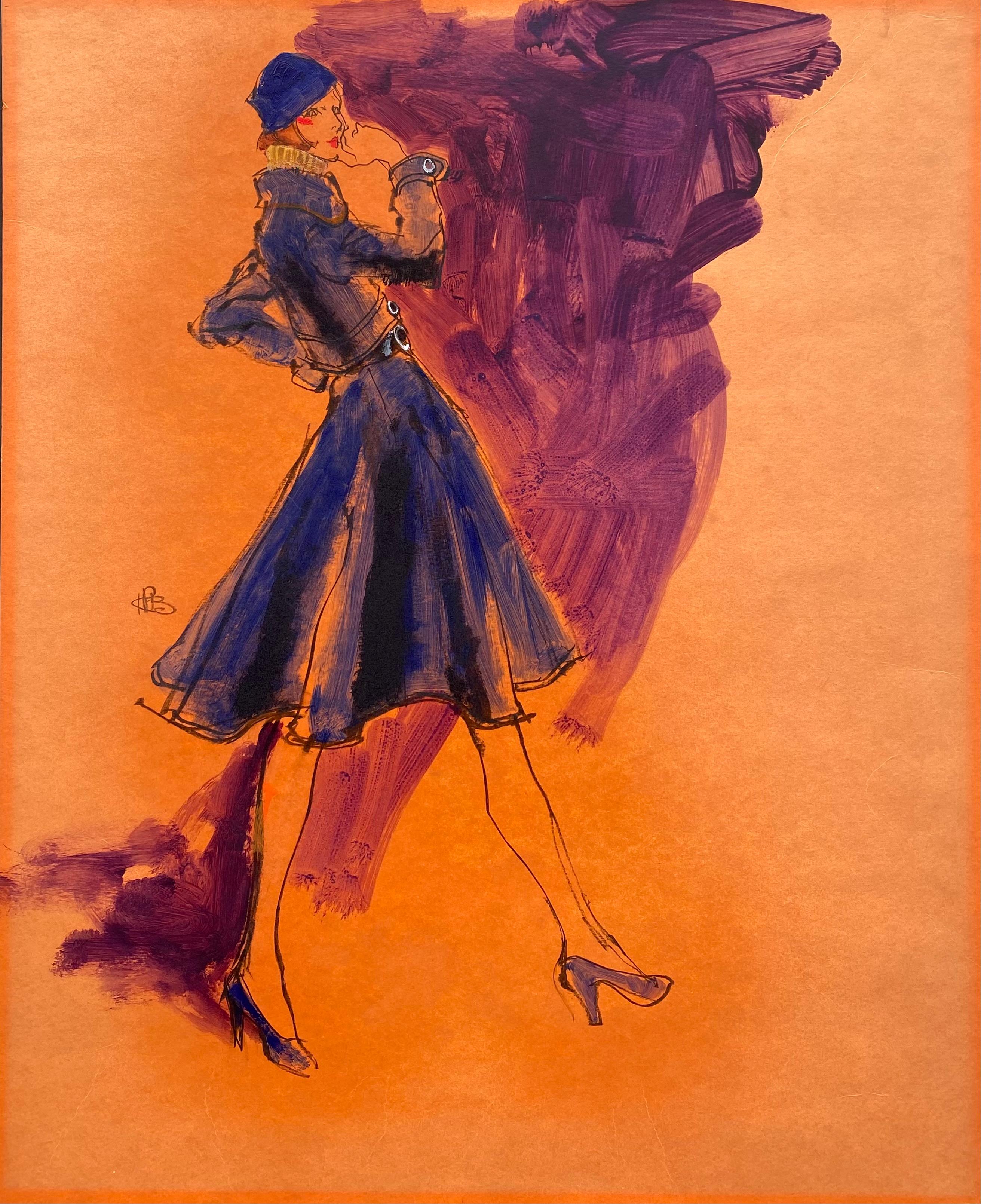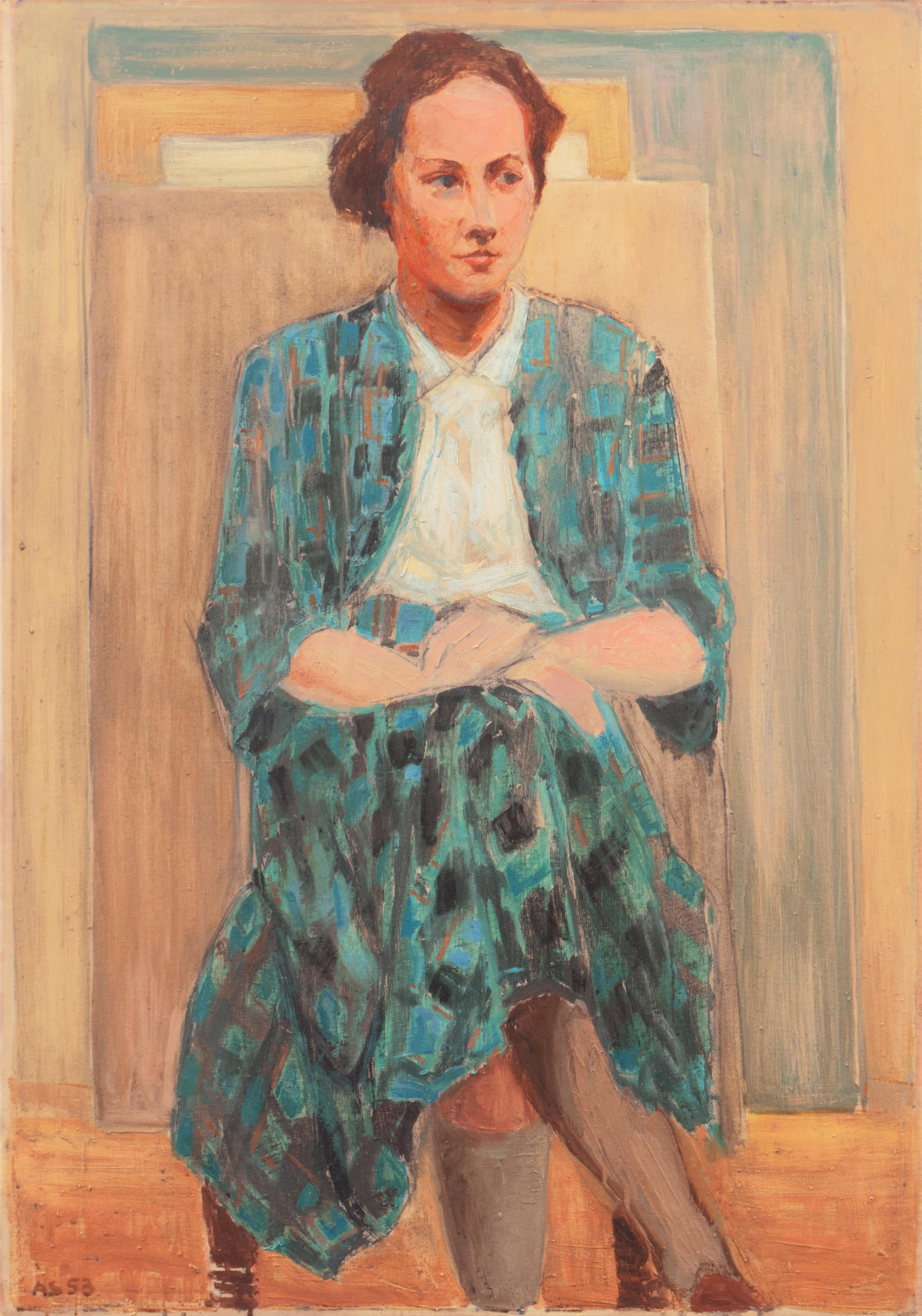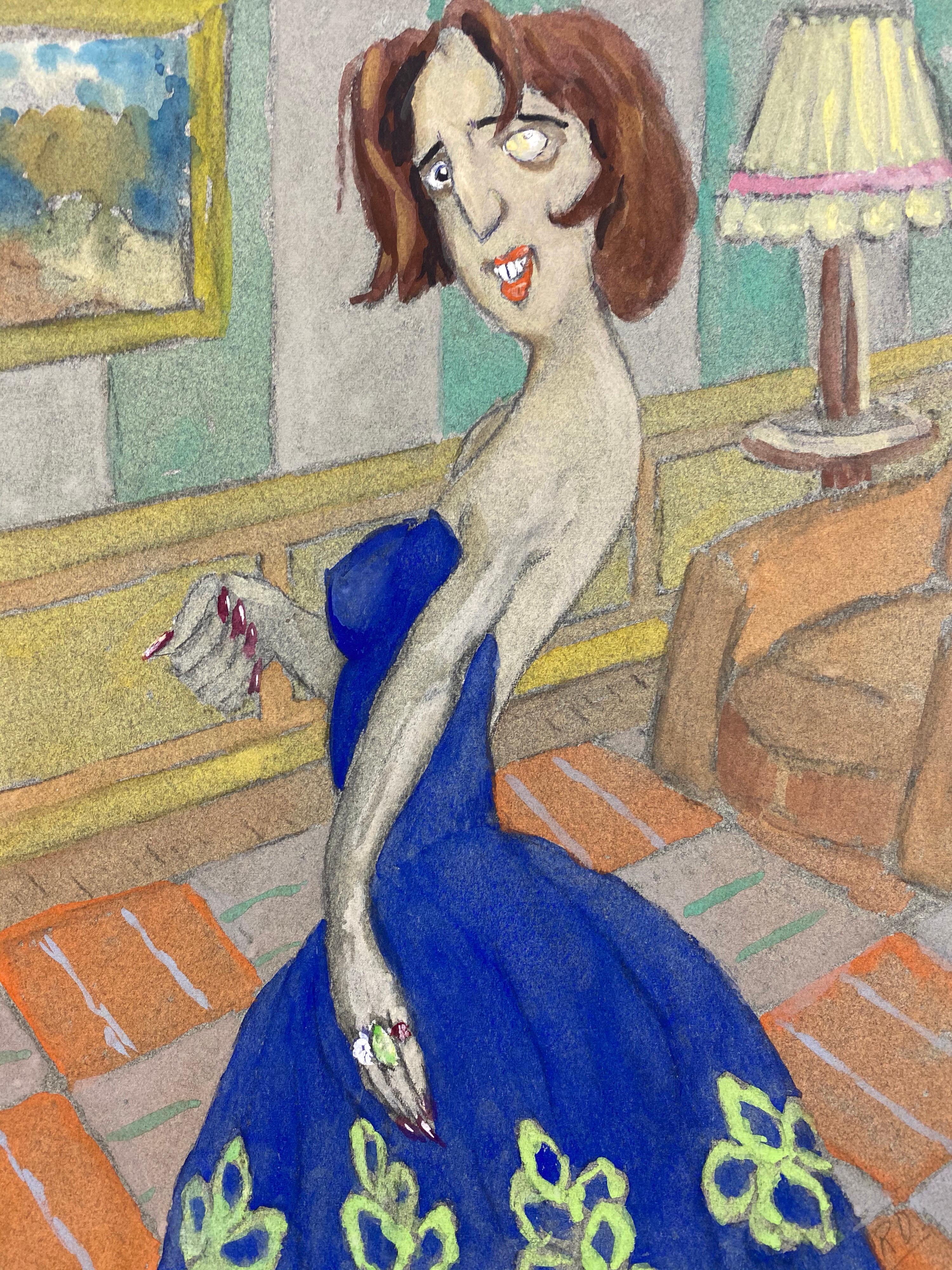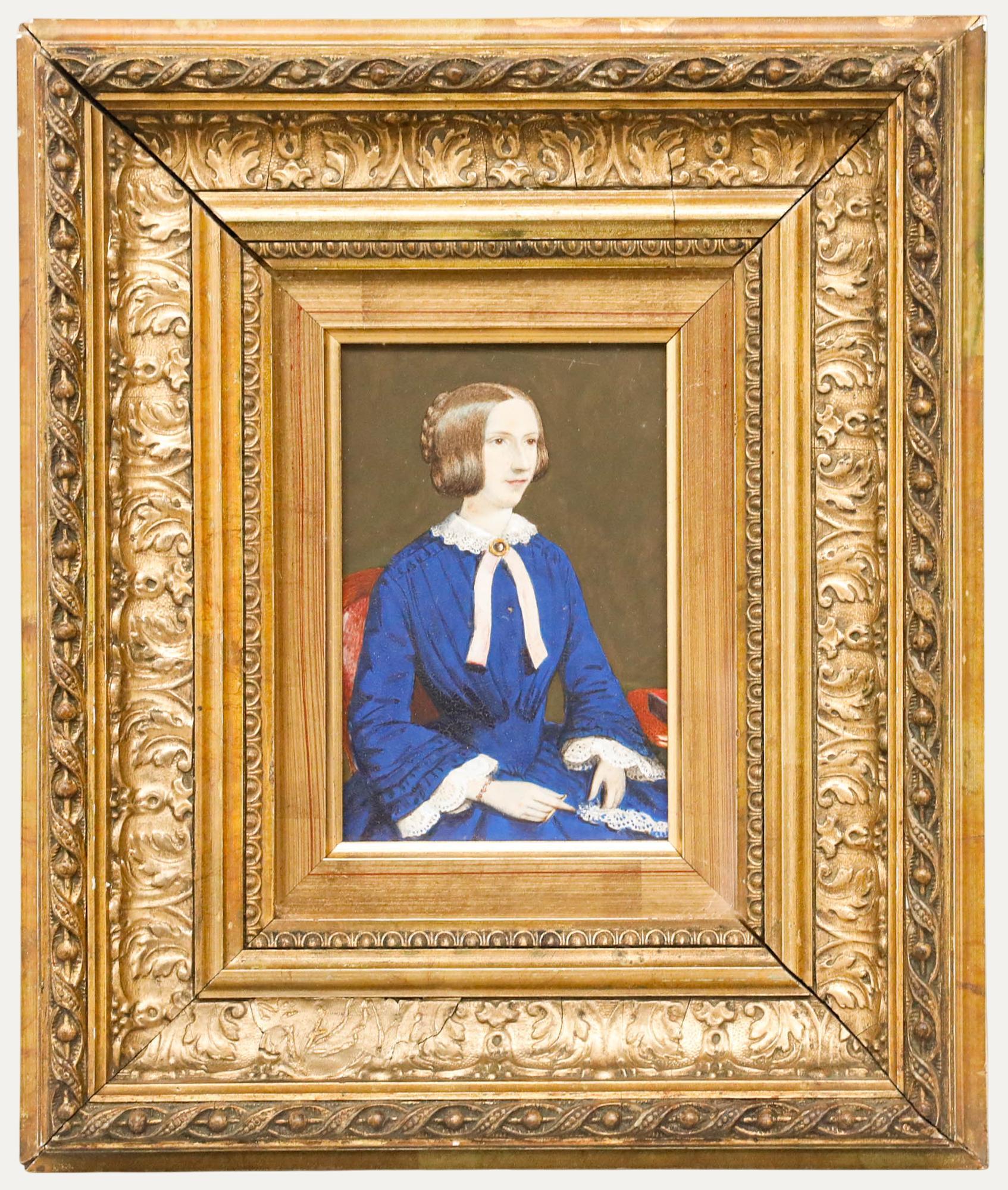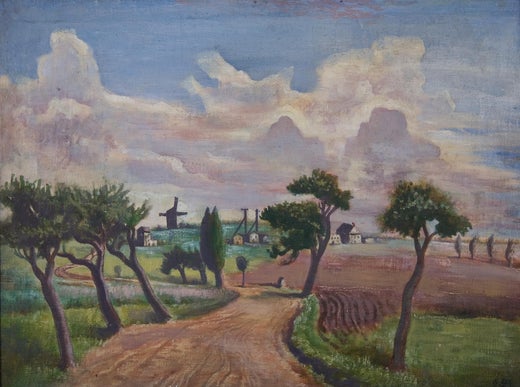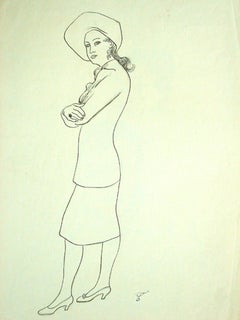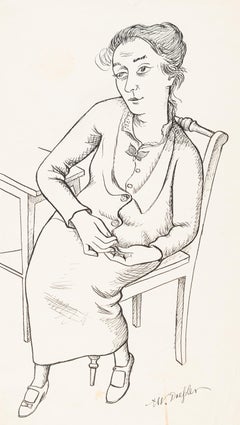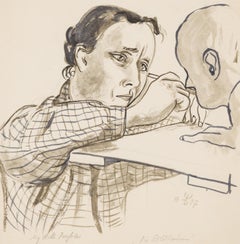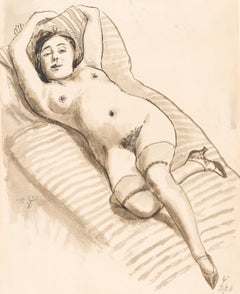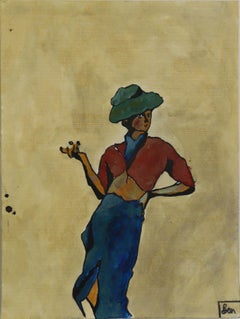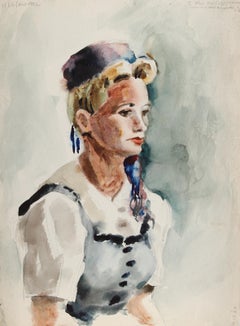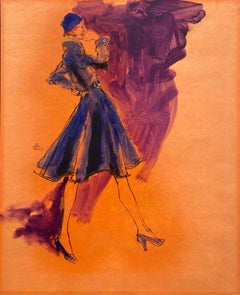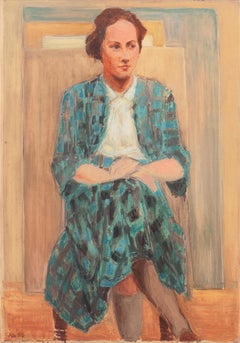Items Similar to Frau mit blauem Kleid
Want more images or videos?
Request additional images or videos from the seller
1 of 7
August Wilhelm DresslerFrau mit blauem Kleid
$2,333.89
£1,721.61
€1,950
CA$3,233.73
A$3,511.20
CHF 1,859.44
MX$43,037.23
NOK 23,011.26
SEK 21,744.42
DKK 14,845.08
About the Item
August Dressler is one of the painters of the New Objectivity. He is one of the lesser-known artists of the Weimar era, but he too, like his famous contemporaries Georg Grosz, John Heartfield, and Otto Dix, was committed to social and political issues.
The Berliner-of-choice defied stubbornly the summary classification. Dressler acted truthfully to his origin, temperament and insight as an individual who presents his bond as obligation, who takes his program as template and his slogan as abomination. Only few painters of his generation restrain so inconspicuously from the revolutionary storm and new trends that found its most effective expression in Expressionism of ” the Bridge” group and in the mystical works of the ‘Blue Rider’. Dressler’s self-imposed isolation is based neither on his capriciousness nor is it intentional – it is simply one of the inner necessities of his artistic existence.
One does not do justice to his work, if one tries to interpret only the visible facts, the artistic or the technical qualities in Dressler’s works. This painter lived his destiny with a stubbornly determined consequence of his fate: the pictures are nothing else than the graphic metaphors of the ‘introverted gaze’. He experienced grief and loneliness already during his youth. Dressler learns early about the shadow side of human existence – it becomes the basis of the way he perceived the world. ” I cannot separate myself from what has established me ” – there was a very immediate connection and solidarity between the painter and his personal experiences (l’art pour l’art attitude). Thus Dressler identifies himself with those embodiments of petty-bourgeois narrowness, with those disappointed and abandoned, with those who appreciate simple joys of life and those with quiet hopes.
In his works the figurative language wins through its ability to depict and objectify feelings without words. Dressler does not paint to be modern or original. His way of perception is essential in a solid sense; he focuses on things, elements, and events that reflect a piece of life.
The closeness to the object and the attachment to the figure remain unchanged in Dressler’s oeuvre. One is tempted, looking at his works of five decades, to speak rather than about development but more of unfolding. The thematic inventory is from the beginning artist’s credo and basic motive: the form is added as the answer of the painter. It is Dressler’s personal preference not to correct reality nor to imitate it – his realism brings form and content, sensation and insight to life in a forceless manner.
Dressler feels, thinks and arguments his works on a more general level; his work is not an illustration of social misery or individual depravity. This “realist of the sharper tone” painterly transcends the limitations of genre and folklore; his “petty-bourgeois everyday life” is neither enclosed in the poor man’s pathos nor in the oh-human ecstasy. “Who controls the keyboard of nature”, proclaims Dressler, “can play in their own ways”.
Source: Delp’sche Verlagsbuchhandlung München (Ed.), August Willhelm Dressler, Munich 1970.
- Creator:August Wilhelm Dressler (1886 - 1970, German)
- Dimensions:Height: 25.6 in (65 cm)Width: 19.69 in (50 cm)
- Medium:
- Movement & Style:
- Period:
- Framing:Framing Options Available
- Condition:
- Gallery Location:Wien, AT
- Reference Number:1stDibs: LU1782212787752
August Wilhelm Dressler
Wilhelm August Dressler is one of the painters of the New Objectivity (...) and was committed to social and political issues. The Berliner-of-choice defied stubbornly the summary classification. Dressler acted truthfully to his origin, temperament and insight as an individual who presents his bond as obligation, who takes his program as template and his slogan as abomination. Only few painters of his generation restrain so inconspicuously from the revolutionary storm and new trends that found its most effective expression in Expressionism of ” the Bridge” group and in the mystical works of the ‘Blue Rider’. Dressler’s self-imposed isolation is based neither on his capriciousness nor is it intentional – it is simply one of the inner necessities of his artistic existence. One does not do justice to his work, if one tries to interpret only the visible facts, the artistic or the technical qualities in Dressler’s works. This painter lived his destiny with a stubbornly determined consequence of his fate: the pictures are nothing else than the graphic metaphors of the ‘introverted gaze’. He experienced grief and loneliness already during his youth. Dressler learns early about the shadow side of human existence – it becomes the basis of the way he perceived the world. ” I cannot separate myself from what has established me ” – there was a very immediate connection and solidarity between the painter and his personal experiences (l’art pour l’art attitude). Thus Dressler identifies himself with those embodiments of petty-bourgeois narrowness, with those disappointed and abandoned, with those who appreciate simple joys of life and those with quiet hopes. In his works the figurative language wins through its ability to depict and objectify feelings without words. Dressler does not paint to be modern or original. His way of perception is essential in a solid sense; he focuses on things, elements, and events that reflect a piece of life.
The closeness to the object and the attachment to the figure remain unchanged in Dressler’s oeuvre. One is tempted, looking at his works of five decades, to speak rather than about development but more of unfolding. The thematic inventory is from the beginning artist’s credo and basic motive: the form is added as the answer of the painter. It is Dressler’s personal preference not to correct reality nor to imitate it – his realism brings form and content, sensation and insight to life in a forceless manner.
Dressler feels, thinks and arguments his works on a more general level; his work is not an illustration of social misery or individual depravity. This “realist of the sharper tone” painterly transcends the limitations of genre and folklore; his “petty-bourgeois everyday life” is neither enclosed in the poor man’s pathos nor in the oh-human ecstasy. “Who controls the keyboard of nature”, proclaims Dressler, “can play in their own ways”. Source: Delp’sche Verlagsbuchhandlung München, August Willhelm Dressler, Munich 1970.
About the Seller
5.0
Vetted Professional Seller
Every seller passes strict standards for authenticity and reliability
Established in 1973
1stDibs seller since 2022
13 sales on 1stDibs
Typical response time: 8 hours
- ShippingRetrieving quote...Shipping from: Wien, Austria
- Return Policy
Authenticity Guarantee
In the unlikely event there’s an issue with an item’s authenticity, contact us within 1 year for a full refund. DetailsMoney-Back Guarantee
If your item is not as described, is damaged in transit, or does not arrive, contact us within 7 days for a full refund. Details24-Hour Cancellation
You have a 24-hour grace period in which to reconsider your purchase, with no questions asked.Vetted Professional Sellers
Our world-class sellers must adhere to strict standards for service and quality, maintaining the integrity of our listings.Price-Match Guarantee
If you find that a seller listed the same item for a lower price elsewhere, we’ll match it.Trusted Global Delivery
Our best-in-class carrier network provides specialized shipping options worldwide, including custom delivery.More From This Seller
View AllDame mit Hut
By August Wilhelm Dressler
Located in Wien, 9
August Dressler is one of the painters of the New Objectivity. He is one of the lesser-known artists of the Weimar era, but he too, like his famous contemporaries Georg Grosz, John H...
Category
20th Century Modern Figurative Drawings and Watercolors
Materials
Paper, Pencil
Frau bei Tisch sitzend
By August Wilhelm Dressler
Located in Wien, 9
August Dressler is one of the painters of the New Objectivity. He is one of the lesser-known artists of the Weimar era, but he too, like his famous contemporaries Georg Grosz, John H...
Category
20th Century Modern Figurative Drawings and Watercolors
Materials
Paper, Ink
Die Bildhauerin
By August Wilhelm Dressler
Located in Wien, 9
August Dressler is one of the painters of the New Objectivity. He is one of the lesser-known artists of the Weimar era, but he too, like his famous contemporaries Georg Grosz, John H...
Category
20th Century Modern Figurative Drawings and Watercolors
Materials
Paper, Ink
Akt mit Strümpfen
By August Wilhelm Dressler
Located in Wien, 9
August Dressler is one of the painters of the New Objectivity. He is one of the lesser-known artists of the Weimar era, but he too, like his famous contemporaries Georg Grosz, John H...
Category
1920s Modern Figurative Drawings and Watercolors
Materials
Ink, Watercolor
Akt mit Handspiegel
By August Wilhelm Dressler
Located in Wien, 9
August Dressler is one of the painters of the New Objectivity. He is one of the lesser-known artists of the Weimar era, but he too, like his famous contemporaries Georg Grosz, John H...
Category
20th Century Modern Figurative Drawings and Watercolors
Materials
Paper, Pencil
Stehender Akt / Standing Nude
By August Wilhelm Dressler
Located in Wien, 9
August Dressler is one of the painters of the New Objectivity. He is one of the lesser-known artists of the Weimar era, but he too, like his famous contemporaries Georg Grosz, John H...
Category
20th Century Modern Figurative Drawings and Watercolors
Materials
Paper, Graphite
You May Also Like
Woman in a Blue skirt, Painting, Watercolor on Watercolor Paper
By Benjamin Carrivick
Located in Yardley, PA
Painted in 2024 Watercolor with a yellow background :: Painting :: Contemporary :: This piece comes with an official certificate of authenticity signed by the artist :: Ready to H...
Category
2010s Contemporary Drawings and Watercolor Paintings
Materials
Watercolor
Portrait of a Woman, Impressionist Watercolor by Eve Nethercott
By Eve Nethercott
Located in Long Island City, NY
Eve Nethercott, American (1925 - 2015) - Portrait of a Woman (87), Year: 1960, Medium: Watercolor, Size: 20 in. x 15 in. (50.8 cm x 38.1 cm), Description: Illuminated from the ...
Category
1960s Impressionist Portrait Drawings and Watercolors
Materials
Watercolor
“Woman in Blue”
By Kenneth Paul Block
Located in Southampton, NY
Here for your consideration is an original watercolor and gouache fashion illustration by the world renowned fashion artist, Kenneth Paul Block. Presently unframed. Signed with initi...
Category
1960s American Modern Figurative Drawings and Watercolors
Materials
Watercolor, Gouache, Archival Paper
$1,440 Sale Price
20% Off
'Woman in Blue', Danish Royal Academy, Brooklyn Museum, Kolding
Located in Santa Cruz, CA
Initialed lower left, 'A.S.' for Anton Schroder (Danish, 1893-1965) and dated 1953.
A substantial, modernist oil painting of a young woman, shown seated and gazing to her left with ...
Category
1950s Modern Portrait Paintings
Materials
Canvas, Oil
1960's French Portrait Posed Lady In Blue Dress Caricature
Located in Cirencester, Gloucestershire
French Character Portrait
French school, Mid 20th Century
Gouache paint on unframed paper
signed lower corner
Image : 12.5 x 9.5 inches
Superbly decorative 1960's French portrait pa...
Category
Mid-20th Century Impressionist Portrait Paintings
Materials
Paper, Ink, Watercolor, Gouache
English School 19th Century Watercolour - Lady in a Blue Dress
Located in Corsham, GB
A finely detailed watercolour and gouache study of a seated lady in a blue dress with gum arabic details. Unsigned. Well presented in an ornate gilt-effect frame with ribbon and foli...
Category
19th Century Portrait Drawings and Watercolors
Materials
Watercolor
